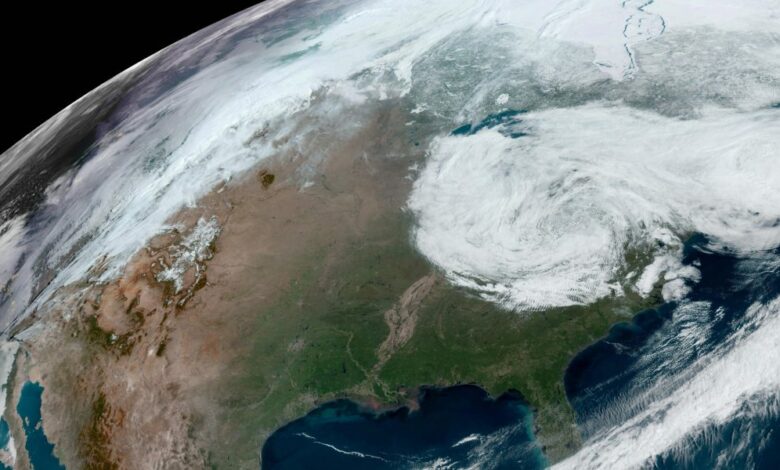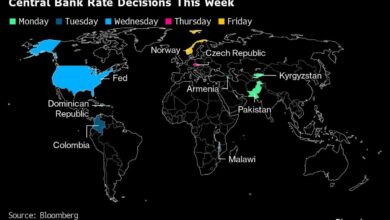Storms could rain on eclipse tourists’ parade as meteorologists have cloudy outlook for much of its path


There’s still plenty of time for forecasts to change, but meteorologists predict that eclipse day storms could blanket parts of the path, which stretches from Mexico and Texas through Maine and parts of Canada.
If clouds don’t get in the way, viewers in the path wearing eclipse glasses will see the moon begin to slowly cover the sun until it is completely blocked, a period of darkness called “totality” during which temperatures drop and the sun’s corona will be visible.What’s the forecast along the eclipse’s path?
Clouds are expected in much of the eclipse’s path Monday thanks to storms that are moving across the central U.S.
National Weather Service meteorologist Marc Chenard says the northeast U.S. currently has the best chance of clear skies, along with parts of Arkansas, Missouri and Illinois.
Canada, too, may have only light cloud cover that won’t significantly impact the view. Higher, thinner clouds should still allow eclipse goers to glimpse the sun, while lower, thicker clouds could obscure the spectacle entirely.
Parts of Ohio, Pennsylvania, New York and Texas are questionable. Northeast Texas, Chenard says, “could kind of go either way at this point.” Mexico may also have low to mid-level cloud cover.
Thushari Jayasekara, a physics professor at Southern Illinois University, saw the 2017 eclipse from Carbondale, Illinois, where it was partially hidden by clouds. From her vantage point at the university’s Saluki Stadium, the spectacle disappeared right as the final bit of the sun was extinguished by the moon. The crowd fell silent.
“It was dark, but we were not able to see the sun,” she said. The clouds parted again during totality, allowing those in Carbondale to catch a glimpse of the full effect.How accurate is the eclipse weather forecast?
“The uncertainty is still pretty high,” Chenard said. The storms moving across the country make it difficult for meteorologists to predict exactly where and when clouds will arrive.
Weather conditions in the northeast U.S. have looked promising so far, but the timing and speed of Monday’s storms may influence what cloud cover looks like for the rest of the country.
The National Oceanic and Atmospheric Administration’s Weather Prediction Center will update the eclipse forecast daily until Monday.How can I see the solar eclipse if it’s cloudy or rained out?
Eclipse viewers can still watch the total solar eclipse online.
NASA will stream telescope views of the sun and on NASA TV starting at 1 p.m. EDT. Associated Press journalists will also bring live coverage of the eclipse from across the path, starting at 10 a.m. EDT with views from Mazatlán, Mexico, and other locations.
The Exploratorium museum, Time and Date and Slooh will also broadcast eclipse day views.
___
The Associated Press Health and Science Department receives support from the Howard Hughes Medical Institute’s Science and Educational Media Group. The AP is solely responsible for all content.
Source link




